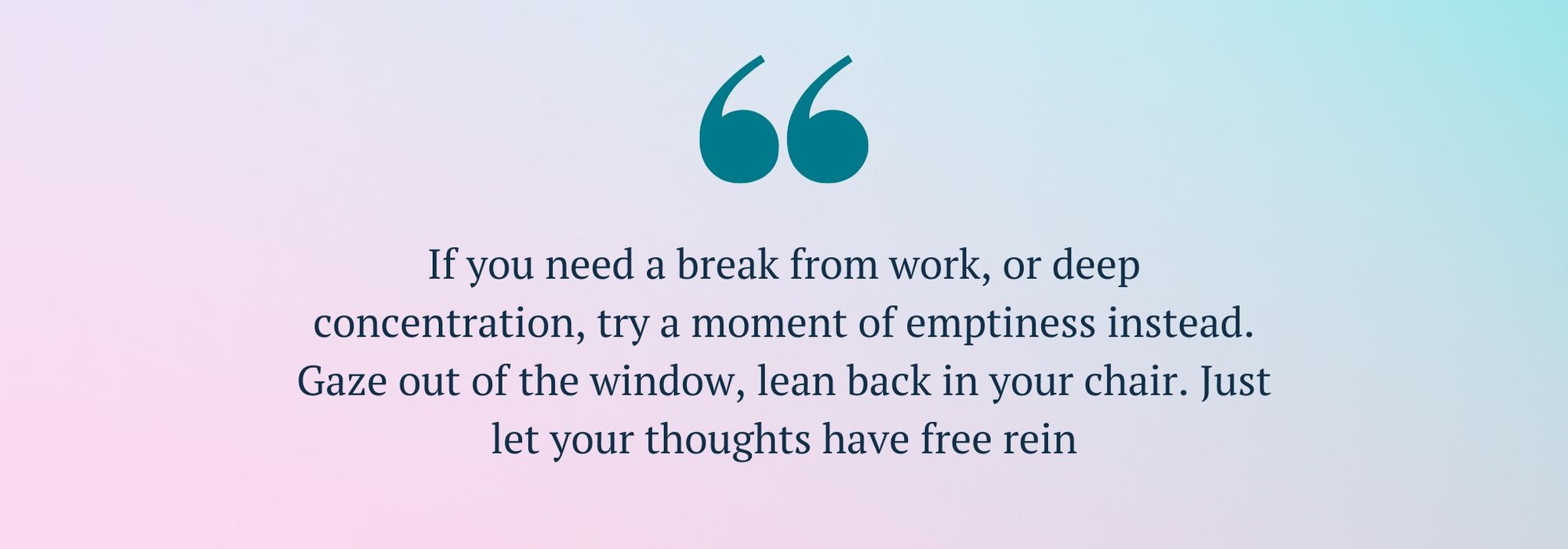Stop doomscrolling and put down your phone! It’s time to let your mind wander...
Whatever happened to daydreaming? In our increasingly busy, technological world, there is always something to fill every spare moment. Whether it’s phone scrolling, or even healthier habits such as reading a good book, or going to a yoga class, when do we ever get to really do nothing?
Perhaps you can remember days at school, gazing out of the window, dreaming of the future, or watching a bird soaring in the sky and imagining a life of freedom. Or maybe you remember long car journeys watching raindrops run down the glass, while you disappeared off into a fantasy world.
But daydreaming is not just for children, it can be a very grown up pursuit. Author Neil Gaiman got the idea for his comic book series The Sandman while lying in bed trying to fall asleep. He was thinking about how much he loved the character, and decided to create his own version. He spent the rest of the night lying awake and planning it. Then there’s William Golding, who got the idea for Lord Of The Flies while teaching at school. He said he often daydreamed about what would happen if the boys were left to their own devices without supervision.
Daydreaming is not just for authors though. Research has found that daydreaming benefits the mind. It can reduce stress and anxiety, develop creativity and problem-solving abilities, as well as helping with social situations. Having thoughts that you aren’t consciously directing allows new ideas to pop into your head. An idea might be a solution to a problem, or a new possibility to explore in life.

Researchers have noticed that people daydream less as they get older, perhaps because daydreams are centred on the future. But, in reality, we are never too old to enrich our lives by letting our minds wander into fantasy.
Inspired to take a moment to let your mind roam? Here are some suggestions for how to bring more daydreaming into your life:
Morning moments
If you’re the kind of person who doesn’t like to jump out of bed straight away, then use this to your advantage. Have a daydreaming lie-in. Don’t reach for your phone, but also, don’t reach for a book, or anything else. Just let your mind wander.
Having a daydream is a bit like having an idea. It’s not something you can force, but happens spontaneously, so let the process happen without expectation. If you end up thinking about your morning coffee, or pancakes for breakfast, then so be it!
If you’re more of an early bird who likes to jump up first thing and get on with your day, then this could also be something to try last thing at night.
Stop before you reach for your phone
I can’t help but wonder if mobile phones are to blame for a reduction in daydreaming moments. Our phones are always there in the palm of our hands, or on the desk, ready for use when we want to fill the empty moments.
Next time you catch yourself in one of those moments, ask yourself if you really need to check your email, or social media. If you need a break from work, or deep concentration, try a moment of emptiness instead. Gaze out of the window, lean back in your chair. Just let your thoughts have free rein for a little while.
If it feels awkward having nothing in your hands, swap your phone for a journal, and write your thoughts down as they come to you.
Daydream soundtrack
Choose some atmospheric instrumental music, and listen to it while walking, on the bus, or while doing the washing up. The absence of words can give you the freedom to visualise a scenario to match the mood. Film soundtracks or classical music can be great options.
Swap the meditation for quiet, still moments
Don’t beat yourself up if you can’t concentrate on your breath. Relaxation can come in many forms, and just making time for quiet stillness without an agenda to follow a particular spiritual practice can inspire daydreaming. Set a timer for 10 minutes, and just notice where your thoughts go.

Daydream prompts
What if when you give yourself time to daydream, your brain just gets stuck on your ‘to-do’ list, or worries about work or relationships? Here is a list of prompts you can use in any spare moments to guide your daydreams:
-
First thing in the morning, daydream about your upcoming day, with everything going perfectly.
-
Freud described daydreaming as being like ‘wish-fulfilment’. Write a list of needs or wishes, and then imagine scenarios where they are fulfilled.
-
Daydream about your dream holiday/meeting someone you admire/a reunion with an old friend.
-
Remember your childhood dreams and ambitions about what you wanted to do when you ‘grew up’. Imagine yourself doing them.
-
Daydream about travelling to any point or place in time that captures your imagination.
One cautionary note…
Sometimes, the mind can wander a bit too far. In a 2016 study published in the journal Nature, psychologist Kalina Christoff, described a new way of seeing anxiety as “mind-wandering gone awry”. While the brain has circuits to allow it to wander, it also has other mechanisms to pull it back to ensure it doesn’t go too far. If your daydreaming takes a dark turn, she recommends naming the feeling, and bringing conscious awareness to it by just noticing that your mind has wandered too far, and inviting it back to reality.
If any worrying scenarios enter your mind, you could also try replacing them with positive scenarios instead. It might seem, at times, as though your thoughts have wandered off beyond your control, but it’s good to remember that you are the director of your daydreams, you can choose the plot, and imagine the perfect happy ending.


Comments